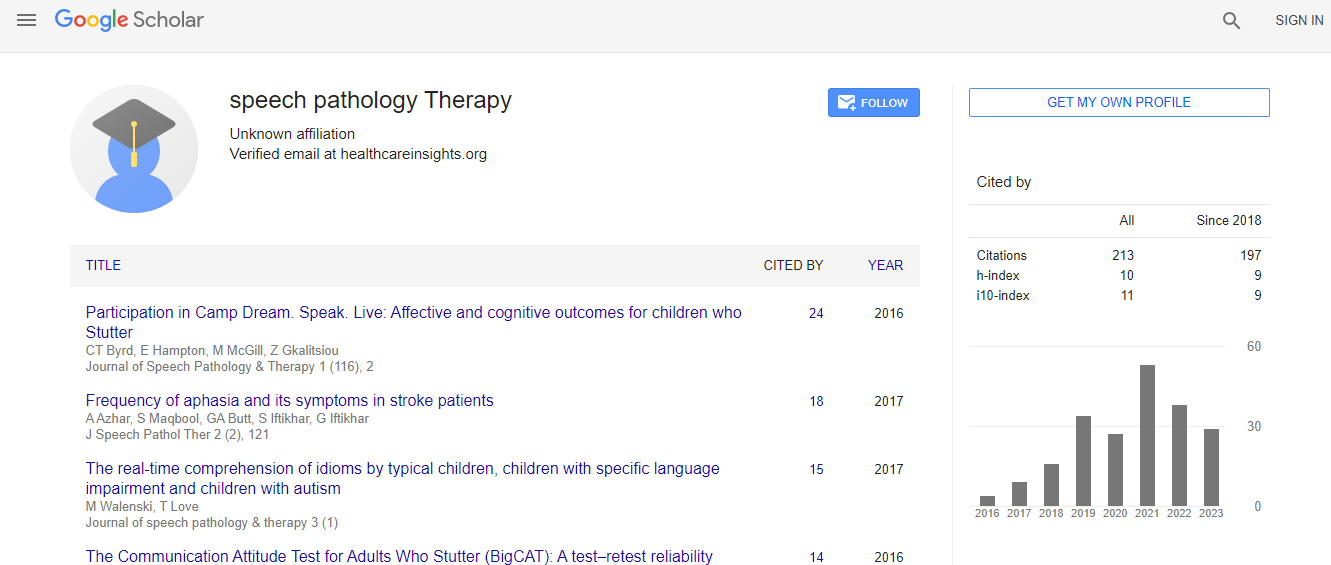Research Article
Frequency of Aphasia and Its Symptoms in Stroke Patients
Azka Azhar1*, Shazia Maqbool2, Ghazal Awais Butt3, Shamazia iftikhar1, and Ghousia Iftikhar21Bahria Town Hospital, Lahore, Pakistan
2Children Hospital, Lahore, Pakistan
3Autism Resource Centre, Lahore, Pakistan
- *Corresponding Author:
- Azka Azhar
Bahria Town Hospital Lahore, Pakistan
Tel: 0331-4962214
E-mail: azkaazhar27@hotmail.com
Received date: October 10, 2016; Accepted date: November 15, 2016; Published date: November 21, 2016
Citation: Azhar A, Shazia Maqbool S, Butt G, Iftikhar S, Iftikhar G (2017) Frequency of Aphasia and Its Symptoms in Stroke Patients. J Speech Pathol Ther 2:121. doi:10.4172/2472-5005.1000121
Copyright: © 2016 Azhar A, et al. This is an open-access article distributed under the terms of the Creative Commons Attribution License, which permits unrestricted use, distribution, and reproduction in any medium, provided the original author and source are credited.
Abstract
Background: Every human uses language. Language is composed of understanding, expressing, finding the right words, reading and writing. If the damage occurs in language areas in the brain, then it can cause aphasia. Aphasia is a pure language disorder includes understanding, expression, writing and reading difficulties. Aphasia usually occurs suddenly, often as the termination of a head injury or stroke, but it may also grow slowly, as in the case of an infection, dementia and brain tumour. The disorder impairs the expression and understanding of language as well as reading and writing.
Objective: To determine the frequency of aphasia and its symptoms in stroke patients.
Material and methods: A cross sectional survey was conducted through questionnaire from Department of Neurology of Mayo, Sheikh Zayed, Lahore general and Jinnah hospital Lahore during January 2013 to June 2013. A sample of 162 Stroke patients was included in the study. The demographic details of the patients are male and female gender, age range between 25-70 years. A questionnaire was filled out based on history and clinical observation. All the collected data were entered into SPSS (statistical package for social sciences) for analysis.
Results: The results indicated that 54.3% stroke patients have aphasia. Out of 162 patients 88 (54.3%) had aphasia and 74 (45.7%) had no aphasia. Among 88 patients of aphasia, 33 (37.5%) were male and 55 (62.5%) were females. Out of 88 aphasic patients 53.3% had Anomia, 33.30% had confronted repetition, 26.7% had Paraphasia, and 23.3% had Agrammaticism and other associated problems were disfluency, circumlocutions, reading and writing problems.
Conclusion: The results of this study showed that the frequency of aphasia is 54.3% in stroke patients.
 Spanish
Spanish  Chinese
Chinese  Russian
Russian  German
German  French
French  Japanese
Japanese  Portuguese
Portuguese  Hindi
Hindi 